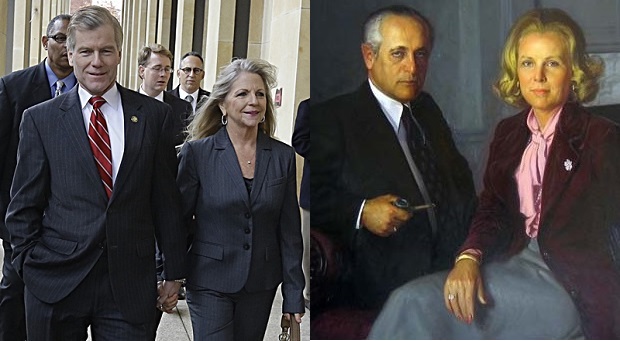By Barry Rascovar
For MarylandReporter.com
We should have seen Donald Trump’s huge upset victory coming: He used many of the same tactics and strategies as Gov. Larry Hogan, Jr. when the Annapolis real estate developer shocked everyone with his big upset in Maryland two years ago.
The similarities are striking.
- Hogan brilliantly used social media as a rallying point for conservatives and disaffected voters of all stripes. So did Trump.
- Hogan was outspent 2-to-1 in TV advertising but easily offset that through free advertising via Facebook with his news-making statements that TV stations and newspapers picked up. So did Trump.
- Hogan was the “change agent” in a year when Maryland voters dearly wanted something different in the Annapolis State House. This year, Trump was the “change agent.”
- Hogan capitalized on the economic pain many people have been suffering since the Great Recession. Trump doubled-down on that one.
- Hogan made himself the focal point for people fed up with in-grown establishment politicians who offered trite, tired and shopworn solutions. Ditto for Trump.
- Hogan’s opponent was uninspiring, lacking in new ideas and tied at the hip to a disliked incumbent. That pretty much described Hillary Clinton, too.
- Hogan was an outsider who had never held elective office. Trump followed suit on that one.
- Hogan pounded away mercilessly on the incumbent’s unpopular policy of raising taxes and fees. Trump never relented in tearing down everything the incumbent president stood for.
- Hogan promised to bring jobs to Maryland. Trump promised to bring jobs to America.
- Hogan voiced people’s anger and dissatisfaction with the status quo. So did Trump, but in a much louder and far more outspoken way.
No wonder Larry Hogan, a conservative Republican in a very Democratic state, won in a rout. He crushed Lt. Gov. Anthony Brown in all but the big three Democratic strongholds of Montgomery and Prince George’s counties and Baltimore City, plus Charles County in Southern Maryland.
A new day for angry white voters
Hogan’s victory signaled a new day for angry white voters, especially those living in rural and exurban areas and on the outskirts of suburbia. Donald Trump followed a very similar formula. It worked for him in 2016 just as it did for Hogan in 2014.
Hogan’s use of Facebook as a key communications and news-making tool was novel at the time. He created his Change Maryland page nearly four years before the election. Back then, he told Len Lazarick of MarylandReporter.com the page was “born out of frustration.”
Hogan had nothing to lose. He was the longest of long shots, similar to Trump’s status at about the same time.
“A lot of people are not happy with the direction of this state,” Hogan told Lazarick in an article published on MarylandReporter.com June 13, 2011. “Some businesses have closed and left the state. Others have just given up.”
In another interview back then, Hogan said, “We need a voice for people who don’t seem to have one” – almost exactly what Trump expressed over and over in his presidential campaign.
Hogan excoriated Gov. Martin O’Malley for his tendency to solve Maryland’s post-recession problems by raising an array of taxes and fees. Hogan said enough, already – let’s head in a new direction.
That’s what Trump promised voters, too.
Importance of social media
By the time Hogan won his election, he had 120,000 Facebook followers – twice the number O’Malley had after eight years in office. Today, Change Maryland has 269,000 likes and the governor counts 7,431 Twitter followers.
Trump had astronomical success following the identical approach.
So clearly Trump, either directly or indirectly, learned from Larry Hogan’s trail-blazing 2014 gubernatorial campaign.
Ironically, Hogan refused to support Trump as a candidate or as the GOP nominee for president. Not my cup of tea, the governor said, recognizing The Donald’s unpopularity with Democrats in Maryland (he gained less than 35% of the Free State’s vote on Nov. 8).
Yet the similarities in the Hogan and Trump campaign approaches are stunning – and so were the results.
Barry Rascovar’s blog is www.politicalmaryland.com. He can be reached at [email protected].






A very thorough and comprehensive job of analyzing the situation here. But the 10 similarities listed don’t even hold a candle to one difference: Governor Hogan did not espouse on the campaign trail (or even tweet about) an agenda of racism, bullying, and bigotry, and Donald Trump did. So while both used social media quite well, as the author points out, the content of that usage was vastly different.
I would classify Governor Hogan as a liberal Republican or a conservative Democrat in his policies. I think that ALL politicians should strive to meet in the middle and compromise for the sake of the people. The reason Bernie Sanders had such a movement is because he was right in the middle, proposing policies that were moderate and sensible. The problem is that politics is now alt right or alt left and no one can get what they need or want for their constituents. GREED is very powerful.
Does that mean that Trump is on his way to a 60% favorable rating????
Mr. Rascovar, I have just one question….Are you calling Governor Hogan a bigot?